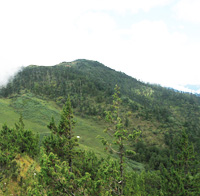Located in the easternmost part of the Kingdom, Sakteng Wildlife Sanctuary spans an area of 650 sq. km and is Bhutan’s newest protected area (launched in 2003). The sanctuary is a lost world of biodiversity waiting to be discovered. It presents a wide diversity of Himalayan terrestrial ecosystems, namely alpine meadow, temperate forest, and warm broadleaf forest. 650 sq. km and is Bhutan’s newest protected area (launched in 2003). The sanctuary is a lost world of biodiversity waiting to be discovered. It presents a wide diversity of Himalayan terrestrial ecosystems, namely alpine meadow, temperate forest, and warm broadleaf forest.
The Sanctuary is home to people of isolated nomadic tribes. It is characterized by thick carpets of rhododendrons, and in its habitat roam snow leopards, red pandas, Himalayan black bear, barking deer, Himalayan red fox, the hoary-bellied Himalayan squirrel and even the mythical Yeti (or the “Abominable Snowman”). Sakteng is virtually untouched by development. Bird species include the Assamese macaw, blood pheasant, grey backed shrike, grey headed woodpecker, common hoopoe, rufous vented tit and dark breasted rosefinch.
Plant life includes Bhutan’s national flower, the blue poppy, rhododendrons, primulas and gentiana, all of which transform the park into a garden of colours during spring time. There are also many plants with medicinal values- such as cordyceps.
|
